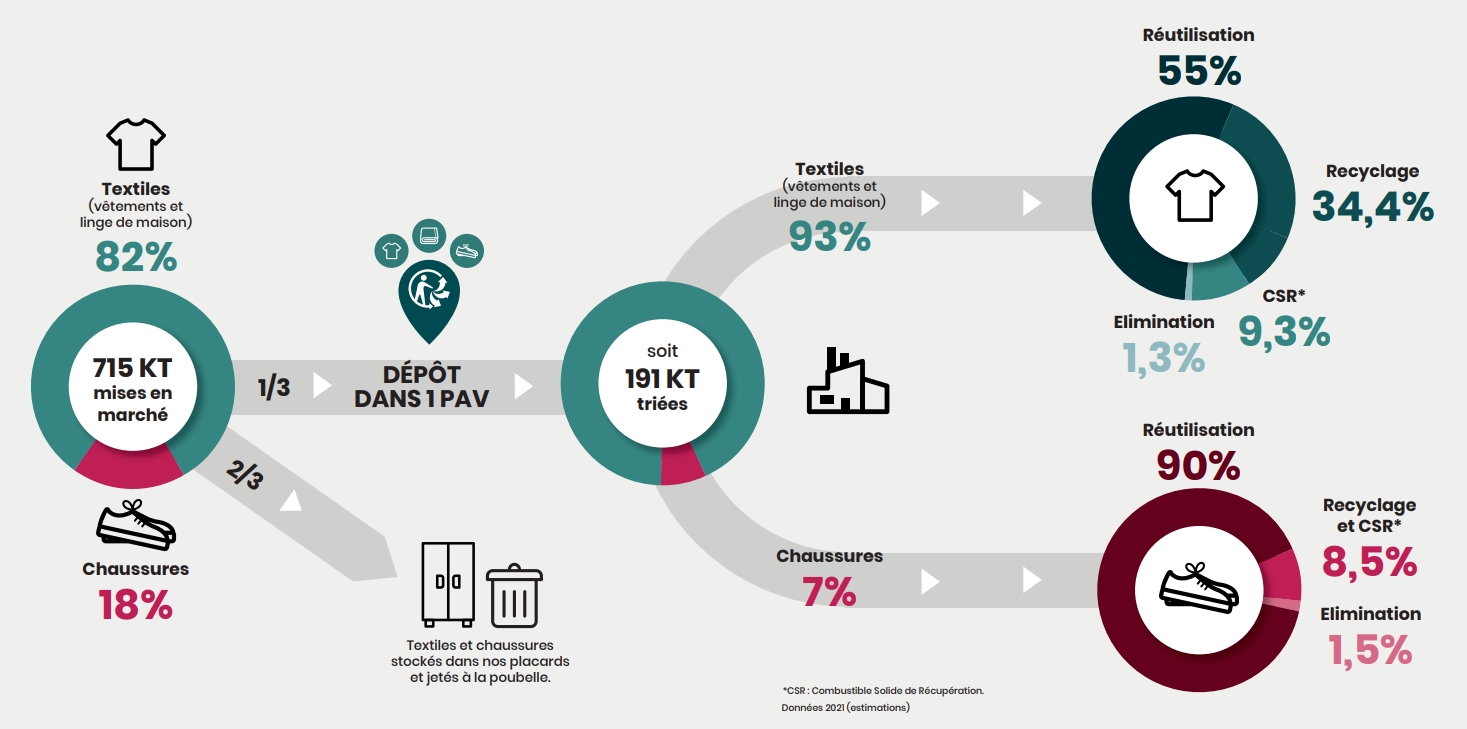In 2021, footwear represented 18% of the total amount of Clothing, Household linen and Footwear (CHF) placed on the market. However, it only represents 7% of all collected and sorted CHF (Refashion, 2021). This difference can be explained by the large majority of consumers who dispose in self-deposit banks (SDB) footwear that is in "good condition" and that can be reused and throw away footwear that is damaged.

This is why footwear that is collected and sorted in sorting centres is mainly reused (90%). Only a low fraction is sent for recycling, mainly for export, or recovered as solid recovered fuel due to a lack of existing industrial solutions.
These figures highlight the need to raise consumer awareness on also depositing their used footwear into self-deposit banks (SDB) so that it is channelled to the most suitable recovery system. They also show the need to act in order to accelerate the development of used footwear industrial recycling solutions in both France and Europe.
Discover our actions to accelerate recycling.
In December 2022, through its mission to accelerate clothing and footwear recycling, Refashion organised a workshop bringing together stakeholders from the footwear industry within the Refashion Recycle network. Its purpose was to initiate discussion and highlight the current situation in footwear recycling.
For the past 10 years Refashion has funded ambitious and innovative projects through its Innovation Challenge, an annual call for project proposals. The Zapateko II project, led by the ERAM Group, and winner of the 2020 Innovation Challenge, resulted in a document that discussed the problems and difficulties encountered in the development of a non-reusable footwear disassembly demonstrator using automatic sorting and aided separation by tearing apart.
Who participated in the workshop?
The Footwear Workshop was attended by key Refashion Recycle Platform stakeholders and representatives of the footwear recycling value chain: sorting operators (Soex), preparation and recycling operators (Revalorem, CETIA), technical centres and professional federations (CTC, Federation Française de la Chaussure - the French Footwear Federation) and marketers (ERAM Group, Salomon).
What was the workshop's purpose?
To identify the main obstacles to overcome in order to be able to develop operational and competitive footwear recycling in France.
Workshop results
Discussions highlighted the need to work on the entire footwear value chain and more specifically on:
Bulking collection,
Product identification,
The channelling of footwear to the correct recycling process,
The search for outlets.
The ZAPATEKO II project follows on from a first study carried out with other partners and conducted by a French institute of technology, ESTIA (Ecole Supérieure des Technologies Industrielles Avancées) in order to identify technological obstacles in the industrial and automated deployment of a footwear recycling system.
What was the purpose of the project?
The purpose of the Zapateko II project, led by the ERAM Group, in collaboration with CETIA (partnership with ESTIA and the CETI [European Centre for Innovative Textiles]) was to develop a disassembly demonstrator for non-reusable footwear by tearing apart the upper shoe from the sole. This technology comes with a footwear model identification solution that uses artificial intelligence-aided optical sorting.
Find out more about the project's results